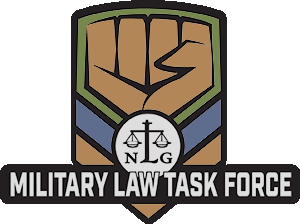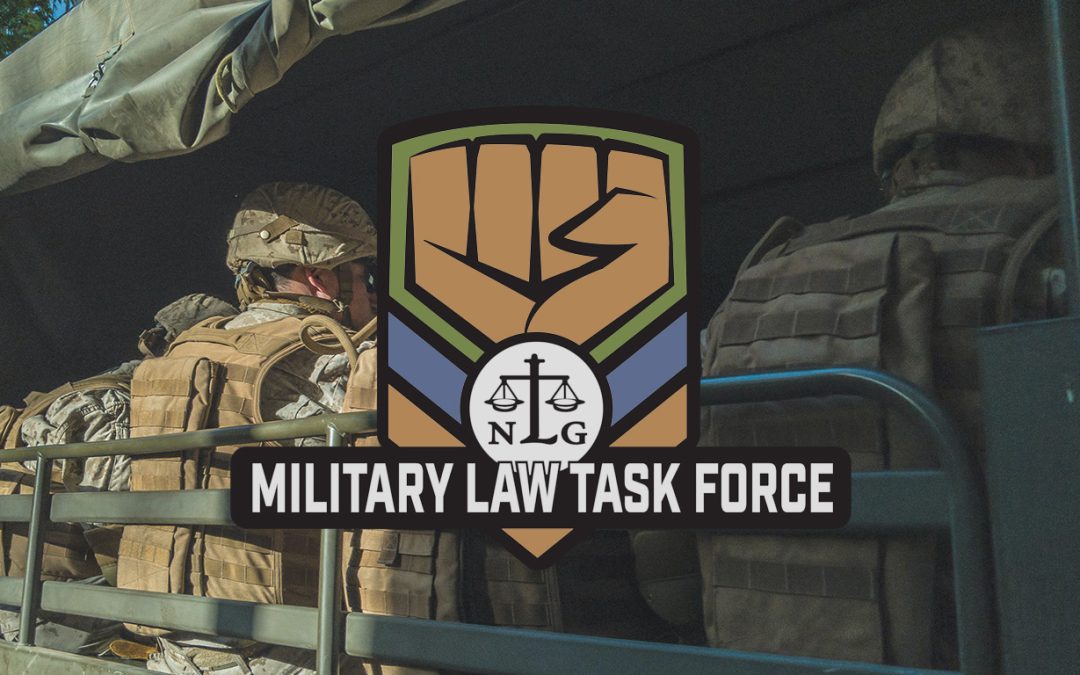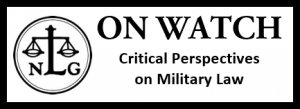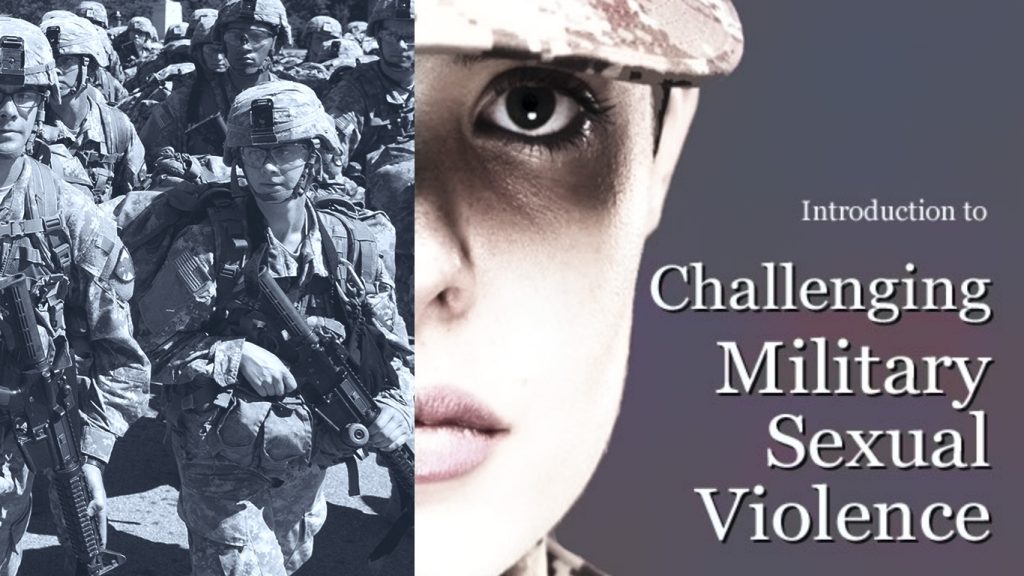A preview of what’s ahead for the Selective Service System
BY EDWARD HASBROUCK
A modern-day draft, if marketed carefully and cleverly, could foster patriotism via the investment of every family in the nation. A greater involvement of the population to include National (nonmilitary) Service could reach every social demographic within the U.S.
The comments above were included in the recommendations from the Selective Service System made to the National Commission on Military, National, and Public Service (NCMNPS). This report was sent to the NCMNPS in December 2017, but wasn’t made public until February 2019, in response to my FOIA requests and after the conclusion of the first year of nationwide public events and collection of written public comments by the NCMNPS and the issuance of an Interim Report by the NCMNPS last month.
There’s some, but only minimal, acknowledgement in the Selective Service System report of opposition to conscription. But dissent is conceptualized as “protest” (complaint) rather than as resistance (direct action) — a political, religious, or moral, rather than a practical, impediment to the draft:
Historically, involuntary induction into the Armed Forces has been controversial, has initiated public dissent and protest…. [L]ow registration compliance rates may reflect elements of society that do not have an incentive to serve, or exposure to the value of National or public service. Although many young men fail to register because they are unaware of the requirement (high school dropouts, immigrants, isolated communities), some populations and communities may be averse to service by religious conviction, moral perspective, or social pressures.
There’s no mention at all in the Selective Service System report of the current decades–old Department of Justice policy of nonenforcement of the criminal penalties for willful refusal to register for the draft. But there is an implicit admission that the low level of compliance, coupled with the lack of effective (or feasible) criminal penalties, would create the basis for challenges to the fairness of any draft based on the current incomplete and inaccurate registration database.
In an exercise in wishful thinking, however, the Selective Service System fantasizes that this could be addressed by “careful and clever” marketing — as though the reluctance of young men to kill and die on the government’s command could be turned around by better targeted advertising (“outreach”):
In order to ensure a fair and equitable draft in a national emergency, it is imperative that as close to 100% of eligible men are in fact registered for Selective Service. One change that would be productive could be a widely expanded, interagency-driven national outreach that addresses all of society (registrants and influencers) with particular attention on a broad array of ‘At risk’ youth, undocumented persons, and elements of society that are not impacted or influenced by automatic registration processes (Driver’s License Legislation, Alaska Permanent fund, federal employment etc.) A fair and equitable induction process through a lottery system requires full participation by the nation’s eligible citizens…. Registration is the law; the nation should back this up by investing in citizenship activities, to include registration for Selective Service. There should be a consequence, other than loss of some federal benefits, for failure to register. That requires an investment in outreach.
This report and recommendations from the Selective Service System were submitted to the NCMNPS in December 2017, as part of a package of reports from Cabinet departments and independent agencies required by the law that established the NCMNPS during the lame-duck Congressional session after the 2016 elections. The section from the Selective Service System was inexplicably missing from the version of the PDF file containing all the other agencies’ reports initially released by the NCMNPS in response to my FOIA requests, although it was listed in the table of contents.
After I pointed out the unexplained omission, and requested that the NCMNPS conduct an additional search specifically for the Selective Service System report, a replacement version of the compilation of reports created on 31 January 2019 and including the previously missing pages from the Selective Service System was quietly posted this week.
I’m continuing to pursue the other records still not disclosed in response to my FOIA requests to the NCMNPS. Most recently, the NCMNPS released a PowerPoint presentation (PDF version) given to the members of the NCMNPS during their visit to the Selective Service System data center at Naval Station Great Lakes, North Chicago, IL, on 29 June 2018. It gives more detail than has been available previously concerning the sources of the current Selective Service database of registrants for the draft.
The NCMNPS was created in 2016 to study and report to Congress and the President on whether registration with the Selective Service System for military conscription (“the draft”) should be ended, extended to young women as well as young men, extended to older women and men with skills in special demand by the military (in health care, computer science, STEM, foreign languages, etc.), or replaced with something else such as compulsory “national service” with both civilian and military options.
I’ve been following the NCMNPS as closely as its penchant for secrecy has allowed. I attended four of its public events last year (in Boston, Nashua, Denver, and Los Angeles), possibly more than anyone else except the Commission and its staff and contractors; submitted detailed written testimony and personally delivered copies of a petition initiated by Julie Mastrine and signed by more than 25,000 people asking that draft registration be ended rather than extended to women; testified in person at the Commission event in Denver; and obtained and published the most comprehensive collection of records of the Commision’s activities, released in response to my Freedom Of Information Act (FOIA) requests.
Meanwhile, the NCMNPS released its interim report on January 23, 2019. The goal of the interim report is not really to “report” on what the NCMNPS has done, but to set the terms of debate (excluding options like, “Admit that draft registration has failed“), and test the political reaction to some of the proposals the Commission is considering.
The Commission has kept its research plan and all of the results of the research it has conducted and commissioned secret. That means the Commission can cherry-pick which data supports its recommendations, and blackhole contrary data or research reports. As a result, it is impossible to assess whether the Commission’s research supports its conclusions and recommendations. Little if any weight should be given to conclusions or recommendations based on secret or selectivelyreleased data.
The Commission’s Web site says that, “The Commission is committed to… learn from those who serve and do not serve,” and, “The Commission seeks to learn more about why people serve and why people may choose not to serve.” But all of the panelists invited to speak at the Commission’s public events to date spoke about why they chose to serve. The Commission has yet to invite any testimony from those who choose not to “serve”, as the Commission defines “service”.
The Commission asked for input from the public, but has chosen to withhold, in their entirety, all of the comments submitted by members of the public, even after I requested them under the Freedom Of Information Act. That means the Commission could, and did, decide which comments to cite in its report, and ignore those raising issues or arguments that the Commission doesn’t want to deal with. Until the comments are made public, we won’t know how the public responded to the Commission’s questions. But I suspect that the 25,000 signers of a petition asking Congress to end draft registration rather than extend it to women, which I presented to the Chair of the Commission at its public event in Los Angeles, constitute the majority of the public submissions to the Commission.
Two points of view, in particular, have been elided from the Commission’s selection and summary of public comments: antiwar feminism, and draft resistance as direct action. The Interim Report notes that the Commission heard from those “who believe that physical differences between men and women would make it impractical or even dangerous to conscript women to serve in combat roles” (i.e. anti-feminist opponents of drafting women, some of whom support drafting men), but doesn’t mention the longstanding strand of feminist opposition to war and conscription. And while the Interim Report notes that, “We have heard from both conscientious objectors who oppose war and feel the act of registration condones violence, and from draft resisters who refuse to register, believing conscription is a violation of their rights,” it treats these solely as political or moral objections. There is no acknowledgement that, as I and others have told the Commission, noncompliance poses a practical barrier to conscription. In falsely restating draft resisters’ position as, “They have argued that current law does not offer any acceptable options for Americans who choose not to register,” the Commission appears to be trying to delude itself into believing that if a civilian service “option” was available, we would no longer object to, or resist, a compulsory “national service” scheme. But in this, they are wrong.
The Interim Report says that, “We are considering several possible ways in which universal service, whether mandatory or not, could be implemented for America’s young people…. [W]e are exploring what a program that requires every American to complete a dedicated period of military, national, or public service might look like.” But a mandate applicable only to young people would not be “universal”. The Interim Report betrays the typically profound and unexamined ageism that underlies the assumption that young people, and only young people, can be compelled to “serve” military or other interests defined by older people. The Commission never mentions the historic and continuing role of youth liberation as one of the sources of objection and resistance to age-based conscription.
Despite having been directed by Congress to assess whether compulsory programs including continued or expanded Selective Service registration and possible compulsory national service are “feasible”, the Commission does not appear to have made any effort to assess whether any compulsory program could be enforced, or if so, how and at what cost. The Commission has taken a “see no evil, hear no evil” approach to issues of compliance, enforcement, and feasibility, as though the government could impose conscription by waving a magic wand. As I had predicted, there is no mention of enforcement in the Commission’s interim report, in any of the reports to the Commission (including the report from the Department of Justice, which is responsible for investigation and prosecution of draft resisters), or in any of the agendas of Commission meetings released to date. The Commission prefers to talk about service rather than coercion. But conscription or compulsory service is a naive fantasy unless it includes a credible enforcement plan and budget endorsed by the Department of Justice.
The Commission will continue to accept written comments from the public and hold formal hearings during 2019, before announcing its final recommendations in March 2020.
The Commission’s first formal hearing, at American University College of Law in Washington, DC, on February 21, 2019, covered “universal service.” Any such system would have to have a compulsory element, and thus an enforcement mechanism, in order to be universal, and the staff memo on issues and policy options to be discussed at this hearing includes the following:
Ideas on how mandatory service could be structured have been proposed many times over the past several decades, with primary considerations including ensuring compliance and effective programming. Punishments or sanctions for failing to meet a service requirement could range from ineligibility for government benefits or employment to fines or imprisonment. Whatever means are in place to encourage compliance, a well-structured mandatory service program would require a system to monitor participation.
According to Commission staff, however, no witnesses were invited to discuss the issues of compliance, enforcement, and feasibility of continued or expanded draft registration or compulsory service at the hearing. So any discussion of resistance to conscription – as distinct from protest or legal options within the system for Conscientious Objectors – did not take place.
The NCMNPS will also hold two days of public hearings on the future of the Selective Service System, military conscription, and compulsory national “service”, including whether draft registration should be ended, extended to women, or modified in other ways, at Gallaudet University in Washington, DC, on Wednesday and Thursday, April 24th and 25th, 2019.
These two days hearings will cover both whether draft registration should be ended or continued, and if it is continued, whether it should be extended to women. Details of the hearing agenda (two panels of invited witness on each day) and a memorandum by the Commission staff summarizing policy options being considered by the Commission will be posted on the Commission’s Web site two weeks before each hearing. The list of invited witnesses will be posted one week in advance of each hearing.
This is the first time since 1980 that any US government agency has held formal hearings at which members of the public can testify about the draft, draft registration, or the Selective Service System.
At a press conference to announce the release of the Commission’s Interim Report, Brig. General Joe Heck, the Chair of the NCMNPS, said, “We are also taking public comment as we go on our hearing tour. We will reserve a portion of that time to collect public comment in person at those hearings.” But only a limited amount of time will be allocated to uninvited witnesses. Witnesses will be selected by lot from those who have checked in and gotten tickets on site before the start of each hearing.
Those witnesses whose tickets are picked will be given two minutes each to speak to the Commission. The venue for the hearings at Gallaudet University on April 24-25, 2019 holds a maximum of 149 people.
I’ll be there, and I hope to see some of you there. Some MLTF and other NLG members submitted comments to the Commission and came to its public events last year. But none of them, so far as I can tell, spoke explicitly of their commitment or that of the MLTF and other lawyers and legal workers to defend anyone prosecuted for resistance to a draft or compulsory “service”. The Commission needs to hear from those who will resist, especially young women who will resist. And it needs to hear from older men and women including NLG/MLTF members who will defend and support resisters in court, in the court of public opinion, and in and out of prison.
Edward Hasbrouck is a legal worker in San Francisco with the Identity Project (PapersPlease.org). He has been a member of the NLG and the MLTF since the early 1980s, when he was an organizer with the National Resistance Committee and co-editor of Resistance News. He publishes a Web site about the draft, draft registration, draft resistance, and the Selective Service System at Resisters.info.
Editor’s note for those reading a hard copy: Hyperlinks in this article can be accessed via the online version on Ed’s blog at https://hasbrouck.org/blog/archives/002334.html . Ed will continue to update this story in subsequent posts, also on that blog.



